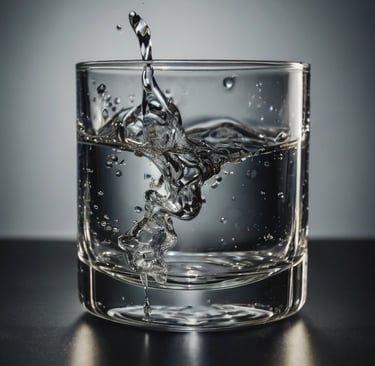
Fluid Retention: Why It Happens and How to Prevent It Naturally
Do you often feel bloated or swollen without knowing why? This Nutri Healthlife article explains what causes fluid retention and how to prevent it with simple, natural strategies. Learn how to reduce bloating, rebalance your body, and feel lighter every day!


Fluid Retention: Why It Happens and How to Prevent It Naturally
Have you ever felt more bloated than usual, with tight clothes and a heavy sensation in your body, even without overeating? That could be fluid retention, a common issue that affects many people, especially women.
The good news is that with a few simple lifestyle changes, you can prevent and significantly reduce this discomfort.
What Is Fluid Retention?
Fluid retention (or edema) occurs when the body accumulates excess water in the tissues, especially in the legs, ankles, hands, and abdomen. It can be caused by poor dietary habits, lack of physical activity, hormonal fluctuations, or even circulation problems.
Most Common Causes
Excessive salt and processed food intake
Lack of physical activity
Sitting or standing for long periods
Hormonal changes and the menstrual cycle
Low water intake
Deficiency in key vitamins and minerals (like potassium and magnesium)
Use of certain medications (e.g., birth control, corticosteroids, etc.)
How to Prevent and Relieve Fluid Retention
1. Drink More Water
It may seem counterintuitive, but the more water you drink, the less your body retains. Proper hydration helps your kidneys flush out excess sodium and toxins.
2. Cut Down on Salt
Avoid highly processed and salty foods like deli meats, canned goods, fast food, and ready-made seasonings. Excess sodium is one of the main causes of water retention.
3. Include Natural Diuretic Foods
Foods like watermelon, cucumber, pineapple, parsley, asparagus, and green tea help stimulate the natural elimination of fluids.
4. Move Your Body Daily
Movement is key to boosting circulation and preventing fluid buildup in the limbs. Walking, stretching, and resistance training are very effective.
5. Focus on Key Nutrients
Nutrients such as potassium (found in bananas, avocados, and sweet potatoes) and magnesium (found in seeds, nuts, and leafy greens) help regulate fluid balance in the body.
6. Avoid Long Periods in the Same Position
If you work in a seated or standing position for long hours, take short breaks to walk or stretch. This improves circulation and prevents swelling.
7. Consider Compression Socks (if needed)
Compression socks can be beneficial for reducing leg swelling, particularly for individuals with circulation issues. Talk to a healthcare professional before using them regularly.
When to Seek Medical Attention
Mild water retention is common and usually manageable through lifestyle changes. However, if the swelling is persistent, painful, or only in one part of the body, it’s important to see a doctor, as it may be a symptom of a more serious condition (such as heart, kidney, or liver issues).
Conclusion: Balance Is the Key
Fluid retention is a sign that your body is out of balance, but the good news is that with healthy habits and mindful nutrition, you can reduce symptoms and feel lighter, more energized, and in control of your wellness.
Stay tuned to Nutri Healthlife for more science-backed tips on nutrition, exercise, and daily health — designed to help you feel your best, naturally.


